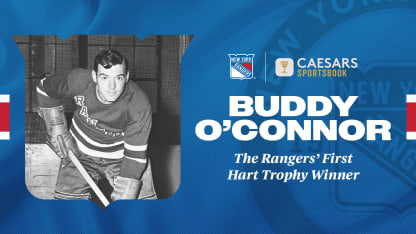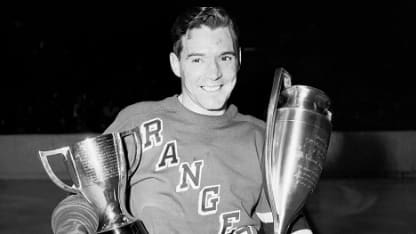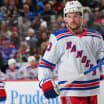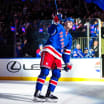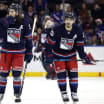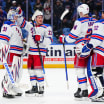When the Rangers acquired Herbert “Buddy” O’Connor as part of a five-player trade with the Montreal Canadiens on August 19, 1947, the team hoped that the veteran center would help the Blueshirts improve and advance to the Stanley Cup Playoffs in 1947-48.
The deal proved to be one of the most successful trades in franchise history. Plus, O’Connor’s indispensable value to the Rangers’ fortunes was instantaneous.
A Montreal native, Buddy played his entire junior and minor league career in his hometown with the Montreal Royals, a Canadiens farm team. In 1941-42, at the age of 25, O’Connor made it to the Canadiens roster and was a finalist for the Calder Trophy as the NHL’s Rookie of the Year, finishing second in voting to the Rangers’ forward Grant Warwick. The following season, he was runner-up for the Lady Byng Trophy – awarded to “the player adjudged to have exhibited the best type of sportsmanship and gentlemanly conduct combined with a high standard of playing ability” – as he registered 58 points and only took one penalty in 50 games during the season.
Over six seasons with Montreal, O’Connor helped the Canadiens win two Stanley Cups and finish the regular season in first place in each of his final four campaigns. After averaging just more than a point per game over his first four seasons with the Canadiens, O’Connor’s offensive production dipped, and his contributions were overshadowed by Montreal’s legendary “Punch Line” of Toe Blake, Elmer Lach, and Maurice Richard.
While the Canadiens’ 1946-47 season ended with a loss in the Stanley Cup Final to the Toronto Maple Leafs, the Rangers were aiming to get back into the playoffs for the first time since 1942. After finishing the 1941-42 season with the NHL’s best record, the team’s roster was depleted during World War II. Frank Boucher, the Rangers’ General Manager and Head Coach, began to rebuild the organization’s farm system during the mid-1940s, but he realized that for the Blueshirts to make the playoffs in 1947-48, he would have to add veteran players via a trade.
The deal that Boucher worked out with Canadiens General Manager Frank Selke, Sr. was to acquire O’Connor and defenseman Frank Eddolls – Boucher called him the “best defenseman not playing in the National Hockey League” at the time – in exchange for three of the Rangers’ young players – defenseman Hal Laycoe, and forwards Joe Bell and George Robertson.
Boucher felt that the Rangers would not only make the playoffs as a result of the trade, he also felt that the Canadiens – even though they had finished with the NHL’s top record in four consecutive seasons – would miss the playoffs. Prior to the start of the 1947-48 season, Boucher predicted that the standings for the six-team NHL would end in the following order: 1. Toronto; 2. Detroit; 3. Boston; 4. Rangers; 5. Montreal; 6. Chicago.
The prediction was amazingly accurate.

